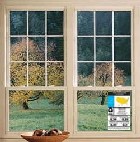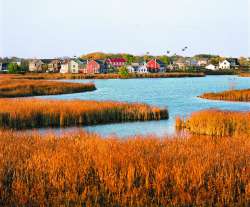Now we enter the marvelous world of windows and doors. As someone who has been in the building trades most of my life I prefer that people live in CAVES. That is right. I have been opposed to windows and all but rudimentary doors for most of my life. There are exceptions. For instance, if you live in a rammed earth house or if the window is part of the heating and cooling system. My attitude is if you want to look outside…GO outside. Not only that but it gets rid of all of those pesky “window treatments”. I am also a MAN and I lose these arguments all the time mostly to gay interior decorators.
http://www.customwindowdecorators.com/drapes.html
OH sorry I mean with women.
http://www.lnt.com/category/452/1/window.html
But if you must put windows in at least have them have an impact on the world and on your taxes too:
http://www.energystar.gov/index.cfm?c=products.pr_tax_credits#c1
| Windows & Doors | Exterior Windows and Skylights |
*Important Change: Before June 1, 2009: After June 1, 2009: SHGC <= 0.30 |
30% of cost, up to $1,5002 | Not all ENERGY STAR labeled windows and skylights qualify for tax credit.More information |
| Storm Windows | Meets IECC1 in combination with the exterior window over which it is installed, for the applicable climate zone | 30% of cost, up to $1,5002 | View our FAQ on storm doors and storm windows. | |
| Exterior Doors |
*Important Change: Before June 1, 2009: After June 1, 2009: SHGC <= 0.30 |
30% of cost, up to $1,5002 | Not all ENERGY STAR doors will qualify.More information | |
| Storm Doors | In combination with a wood door assigned a default U-factor by the IECC1, and does not exceed the default U-factor requirement assigned to such combination by the IECC | 30% of cost, up to $1,5002 | View our FAQ on storm doors and storm windows. |
:}
http://www.energystar.gov/index.cfm?c=windows_doors.pr_windows
Home > Products > Windows, Doors, and Skylights
Residential Windows, Doors, and Skylights for Consumers
(Are you a partner? For Partners)
Want more from your windows? Ask for ENERGY STAR.
ENERGY STAR-qualified windows, doors, and skylights save you energy and money, increase the comfort of your home, and protect your valuable possessions from sun damage. They are also better for the environment because lowering your energy use means less air pollution from power plants.

- Save money and energy. Installing ENERGY STAR-qualified windows lowers energy bills and saves you money over single-paned and even new double-paned, clear-glass windows.
- More than just dollar savings. ENERGY STAR-qualified windows protect from the winter cold and summer sun, while also reducing condensation and interior fading.
- What makes a window, door, or skylight energy-efficient? Thanks to a host of new technologies, ENERGY STAR-qualified windows, doors, and skylights keep your home cooler in the summer and warmer in the winter, making you more comfortable.
- Purchasing tips to help you buy with confidence. Every ENERGY STAR-qualified window, door, and skylight is independently certified to perform at levels that meet or exceed strict energy efficiency guidelines set by the U.S. Department of Energy.
- Energy-saving tips. Proper installation, orientation, tree planting, and home sealing can help you save even more energy and money!
- Find Rebates. Search for local rebates in your area and learn about the 2009 federal tax credit
:}
Windows like these:
The typical U.S. family spends over $1,600 a year on utility bills |
|
All Champion windows feature our exclusive, insulated Comfort 365® Glass, which sets the industry standard…Just some of the benefits of Champion vinyl replacement windows:
Improve your home’s look and overall energy efficiency; contact a Champion representative today to schedule your FREE in-home consultation. See just how quickly and easily you can replace your old in-efficient windows with new Champion vinyl replacement windows! |
:}
And these:
Replacement window experts for the greater Central Illinois, IL area.
|
Renewal by Andersen offers a start-to-finish replacement windows process, you get custom-crafted, energy-efficient windows and doors professionally installed for you. Simply request a free in home window consultation and you’re on your way to enjoying your beautiful replacement windows and patio doors for years to come. You’ll love your new windows! |
|
Visit our window or door product visualizer
|
2009 Tax Credit
|
||||
|
Need financing for your project?
|
Read about our SmartSun™ glass
|
||||
:}
Next up the scintillating topic of INsulation. …By the way if you live in the Connecticut area, you might check these guys out. I hear they do pretty good work….
http://www.simplyadditions.com/
:}












 Nearly 300 products were submitted for consideration for the various catagories and PowerFilm was among the few to be recognized.
Nearly 300 products were submitted for consideration for the various catagories and PowerFilm was among the few to be recognized. Monday, April 20, 2009 at 10:08AM
Monday, April 20, 2009 at 10:08AM







